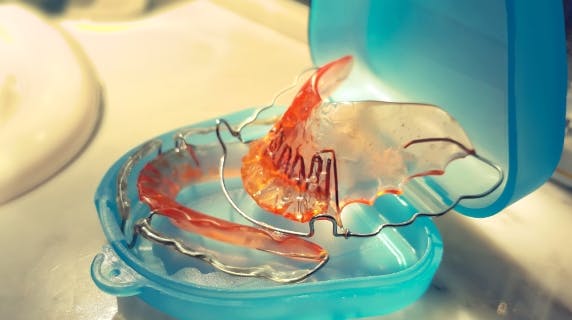What to Expect When Getting A Removable Dental Appliance
Like many decisions you make for life, it’s often the small things that can make the difference. This is just as true for a retainer, aligner or mouth guard. Understanding a bit more about what’s involved in getting a retainer made can help you manage your own expectations and avoid any late surprises or disappointments.
Thinking about getting a retainer?
Your dentist can help decide if a new retainer is the right choice. If you’ve already had orthodontic treatment to get your perfect smile, then a retainer is a good way of protecting it. Retainers keep your teeth in place following orthodontic treatment and each retainer is custom made to fit around your teeth.
On the other hand, if you’re looking to start treatment to realign or straighten your teeth, then you’re probably not yet ready for a retainer. Instead, consult an orthodontist about aligner. These can look very similar to retainers but are technically very different and sometimes used as part of a treatment program worked out with your dental professional. It is always advisable to consult your dental professional about your options.
Getting a retainer or aligner made
The way aligners and retainers are made can vary widely and depend on your dental professional. Traditionally, orthodontists took models of you mouth to generate a mold. Some orthodontists still use this method while others use more advanced technology to generate 3D models. Either way will work to get a custom-made retainer.
While retainers are designed to maintain your smile, aligners are part of an orthodontic treatment to realign your teeth, as their name suggests. Because of this, there will likely be a deeper consultation involving an examination and some or all of the following: x-rays, digital scans, photograph and impressions of your teeth. Combined with some smart software, these will then be used to develop a treatment plan to gradually move your teeth into position over a number of steps. Each step generally requires the fabrication of a new aligner.
Wearing my retainer or aligner
It’s important to wear and care for your retainer or aligner. For any discomfort, contact your dental professional immediately. You can find out more about retainer or aligner pain and tips to manage it here. Check with your dentist regarding the amount of time you should wear your appliance or what you should do if you've not been following the directions for use. Typically, you should remove your aligner for eating and cleaning during treatment. The same goes for your retainer unless otherwise directed by your dentist. All the way through, regular cleaning and good oral hygiene is important to avoid the build up of plaque bacteria that can cause bad breath and can cause your removable dental appliance to discolor or stain. You can find out how best to clean and care for your retainer or aligner here.
Can I get an aligner online?
We recommend seeing your dental professional in-person, but there are various online or by-mail services you can use. These at-home services are still unproven but ordering aligners online can be more convenient and cost effective than going to a dentist. If you feel confident ordering online, it’s worth doing a bit of homework to make sure you’re happy with the credentials of the company you want to use. Check out reviews, pick up the phone or live chat to find out what input you get from a dental professional and what assurances they provide if you’re unhappy with the fit. Different online providers may have slightly different products, steps and services. Make sure you get the answers you need and are happy with your conversations with them before you go ahead.
Is there any difference getting a mouth guard made?
Unlike retainers that keep your teeth in line, mouth guards (or splints) provide a barrier to protect your teeth from grinding. If you order a custom mouth guard you’ll have to provide an impression of your teeth in the same way as you would for a retainer. A model is to be made and adjusted to accommodate your bite.
We hope this will give you a clearer idea of what to expect using a retainer, an aligner or mouth guard.





